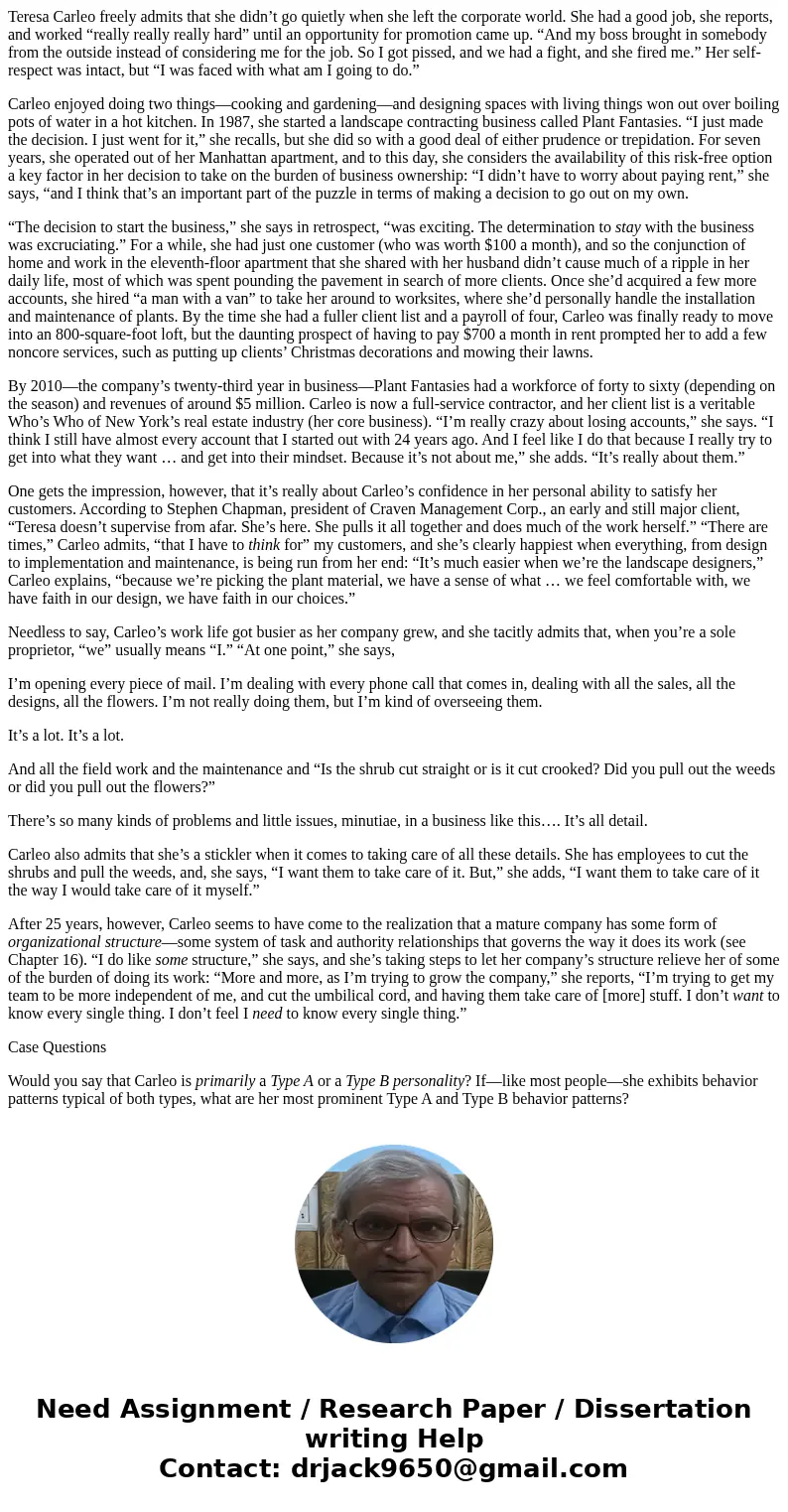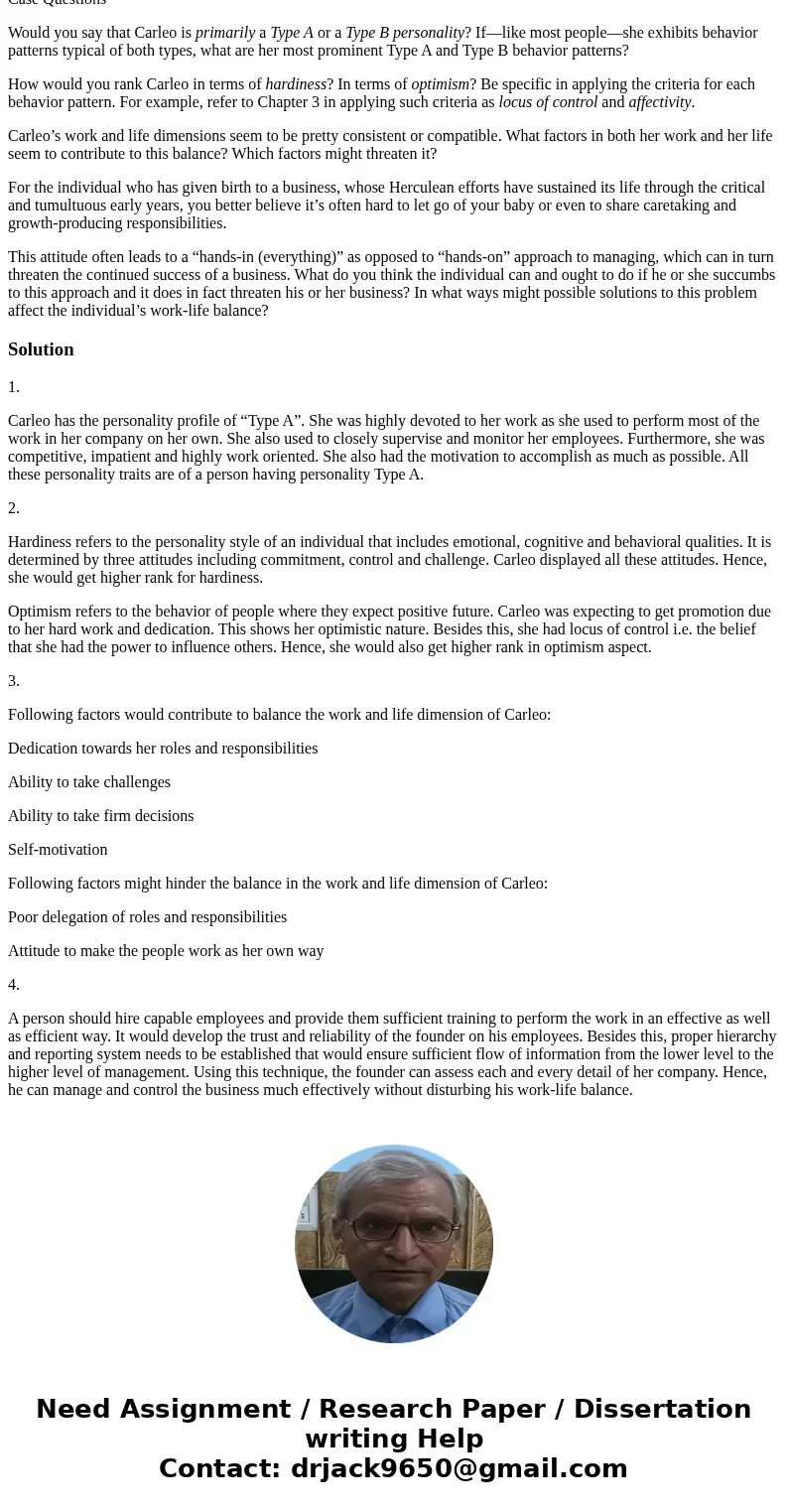Teresa Carleo freely admits that she didnt go quietly when s
Teresa Carleo freely admits that she didn’t go quietly when she left the corporate world. She had a good job, she reports, and worked “really really really hard” until an opportunity for promotion came up. “And my boss brought in somebody from the outside instead of considering me for the job. So I got pissed, and we had a fight, and she fired me.” Her self-respect was intact, but “I was faced with what am I going to do.”
Carleo enjoyed doing two things—cooking and gardening—and designing spaces with living things won out over boiling pots of water in a hot kitchen. In 1987, she started a landscape contracting business called Plant Fantasies. “I just made the decision. I just went for it,” she recalls, but she did so with a good deal of either prudence or trepidation. For seven years, she operated out of her Manhattan apartment, and to this day, she considers the availability of this risk-free option a key factor in her decision to take on the burden of business ownership: “I didn’t have to worry about paying rent,” she says, “and I think that’s an important part of the puzzle in terms of making a decision to go out on my own.
“The decision to start the business,” she says in retrospect, “was exciting. The determination to stay with the business was excruciating.” For a while, she had just one customer (who was worth $100 a month), and so the conjunction of home and work in the eleventh-floor apartment that she shared with her husband didn’t cause much of a ripple in her daily life, most of which was spent pounding the pavement in search of more clients. Once she’d acquired a few more accounts, she hired “a man with a van” to take her around to worksites, where she’d personally handle the installation and maintenance of plants. By the time she had a fuller client list and a payroll of four, Carleo was finally ready to move into an 800-square-foot loft, but the daunting prospect of having to pay $700 a month in rent prompted her to add a few noncore services, such as putting up clients’ Christmas decorations and mowing their lawns.
By 2010—the company’s twenty-third year in business—Plant Fantasies had a workforce of forty to sixty (depending on the season) and revenues of around $5 million. Carleo is now a full-service contractor, and her client list is a veritable Who’s Who of New York’s real estate industry (her core business). “I’m really crazy about losing accounts,” she says. “I think I still have almost every account that I started out with 24 years ago. And I feel like I do that because I really try to get into what they want … and get into their mindset. Because it’s not about me,” she adds. “It’s really about them.”
One gets the impression, however, that it’s really about Carleo’s confidence in her personal ability to satisfy her customers. According to Stephen Chapman, president of Craven Management Corp., an early and still major client, “Teresa doesn’t supervise from afar. She’s here. She pulls it all together and does much of the work herself.” “There are times,” Carleo admits, “that I have to think for” my customers, and she’s clearly happiest when everything, from design to implementation and maintenance, is being run from her end: “It’s much easier when we’re the landscape designers,” Carleo explains, “because we’re picking the plant material, we have a sense of what … we feel comfortable with, we have faith in our design, we have faith in our choices.”
Needless to say, Carleo’s work life got busier as her company grew, and she tacitly admits that, when you’re a sole proprietor, “we” usually means “I.” “At one point,” she says,
I’m opening every piece of mail. I’m dealing with every phone call that comes in, dealing with all the sales, all the designs, all the flowers. I’m not really doing them, but I’m kind of overseeing them.
It’s a lot. It’s a lot.
And all the field work and the maintenance and “Is the shrub cut straight or is it cut crooked? Did you pull out the weeds or did you pull out the flowers?”
There’s so many kinds of problems and little issues, minutiae, in a business like this…. It’s all detail.
Carleo also admits that she’s a stickler when it comes to taking care of all these details. She has employees to cut the shrubs and pull the weeds, and, she says, “I want them to take care of it. But,” she adds, “I want them to take care of it the way I would take care of it myself.”
After 25 years, however, Carleo seems to have come to the realization that a mature company has some form of organizational structure—some system of task and authority relationships that governs the way it does its work (see Chapter 16). “I do like some structure,” she says, and she’s taking steps to let her company’s structure relieve her of some of the burden of doing its work: “More and more, as I’m trying to grow the company,” she reports, “I’m trying to get my team to be more independent of me, and cut the umbilical cord, and having them take care of [more] stuff. I don’t want to know every single thing. I don’t feel I need to know every single thing.”
Case Questions
Would you say that Carleo is primarily a Type A or a Type B personality? If—like most people—she exhibits behavior patterns typical of both types, what are her most prominent Type A and Type B behavior patterns?
How would you rank Carleo in terms of hardiness? In terms of optimism? Be specific in applying the criteria for each behavior pattern. For example, refer to Chapter 3 in applying such criteria as locus of control and affectivity.
Carleo’s work and life dimensions seem to be pretty consistent or compatible. What factors in both her work and her life seem to contribute to this balance? Which factors might threaten it?
For the individual who has given birth to a business, whose Herculean efforts have sustained its life through the critical and tumultuous early years, you better believe it’s often hard to let go of your baby or even to share caretaking and growth-producing responsibilities.
This attitude often leads to a “hands-in (everything)” as opposed to “hands-on” approach to managing, which can in turn threaten the continued success of a business. What do you think the individual can and ought to do if he or she succumbs to this approach and it does in fact threaten his or her business? In what ways might possible solutions to this problem affect the individual’s work-life balance?
Solution
1.
Carleo has the personality profile of “Type A”. She was highly devoted to her work as she used to perform most of the work in her company on her own. She also used to closely supervise and monitor her employees. Furthermore, she was competitive, impatient and highly work oriented. She also had the motivation to accomplish as much as possible. All these personality traits are of a person having personality Type A.
2.
Hardiness refers to the personality style of an individual that includes emotional, cognitive and behavioral qualities. It is determined by three attitudes including commitment, control and challenge. Carleo displayed all these attitudes. Hence, she would get higher rank for hardiness.
Optimism refers to the behavior of people where they expect positive future. Carleo was expecting to get promotion due to her hard work and dedication. This shows her optimistic nature. Besides this, she had locus of control i.e. the belief that she had the power to influence others. Hence, she would also get higher rank in optimism aspect.
3.
Following factors would contribute to balance the work and life dimension of Carleo:
Dedication towards her roles and responsibilities
Ability to take challenges
Ability to take firm decisions
Self-motivation
Following factors might hinder the balance in the work and life dimension of Carleo:
Poor delegation of roles and responsibilities
Attitude to make the people work as her own way
4.
A person should hire capable employees and provide them sufficient training to perform the work in an effective as well as efficient way. It would develop the trust and reliability of the founder on his employees. Besides this, proper hierarchy and reporting system needs to be established that would ensure sufficient flow of information from the lower level to the higher level of management. Using this technique, the founder can assess each and every detail of her company. Hence, he can manage and control the business much effectively without disturbing his work-life balance.


 Homework Sourse
Homework Sourse